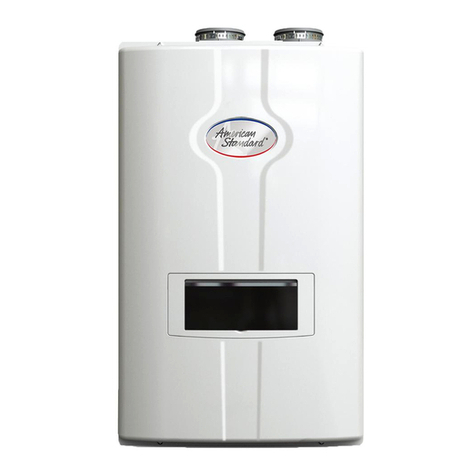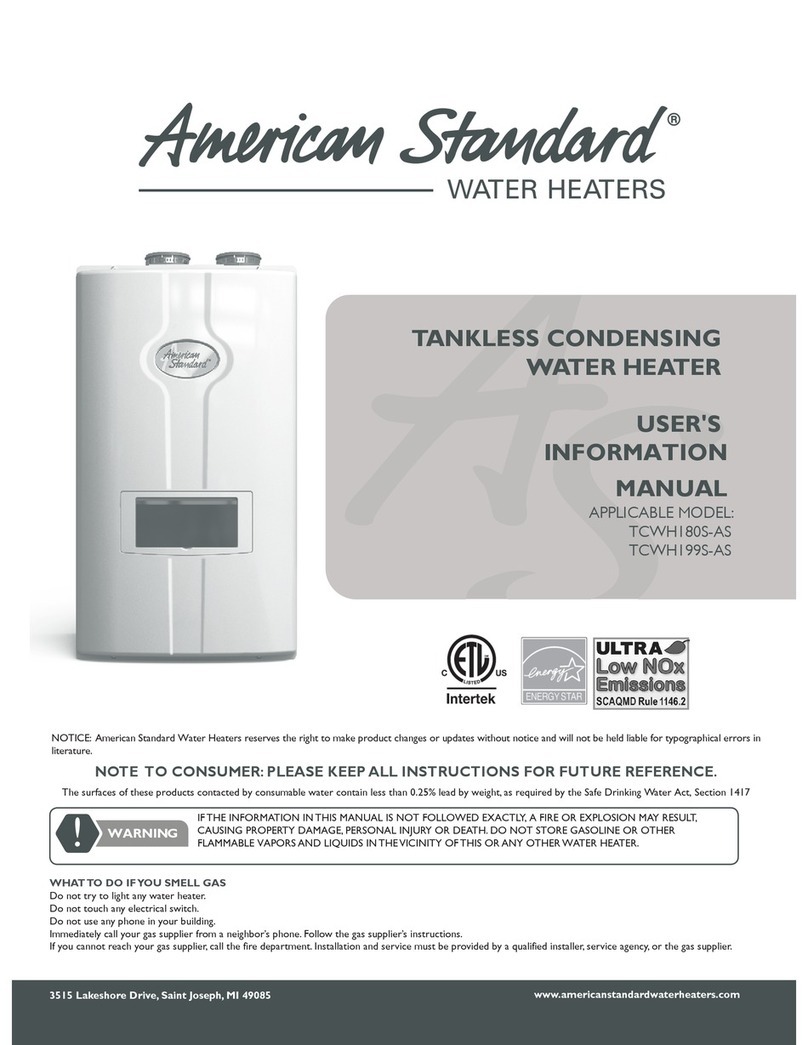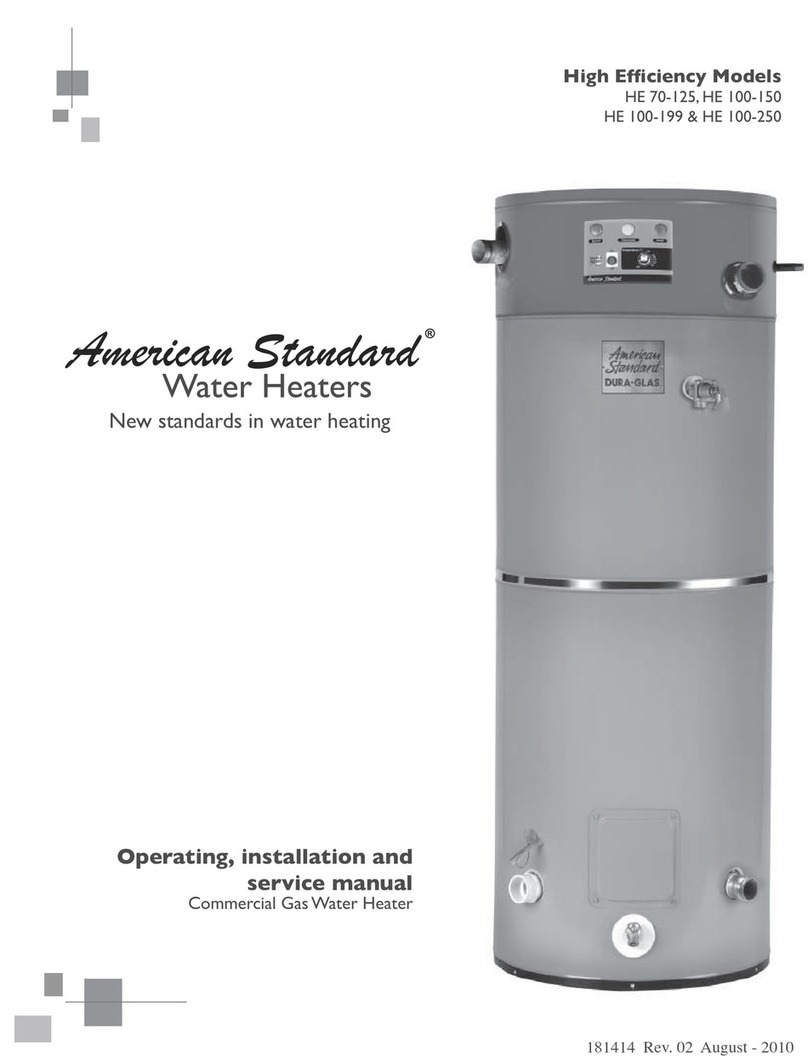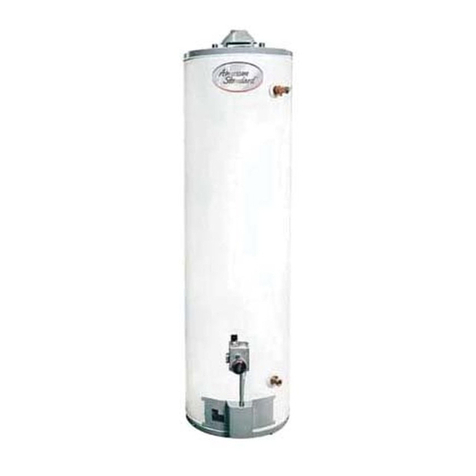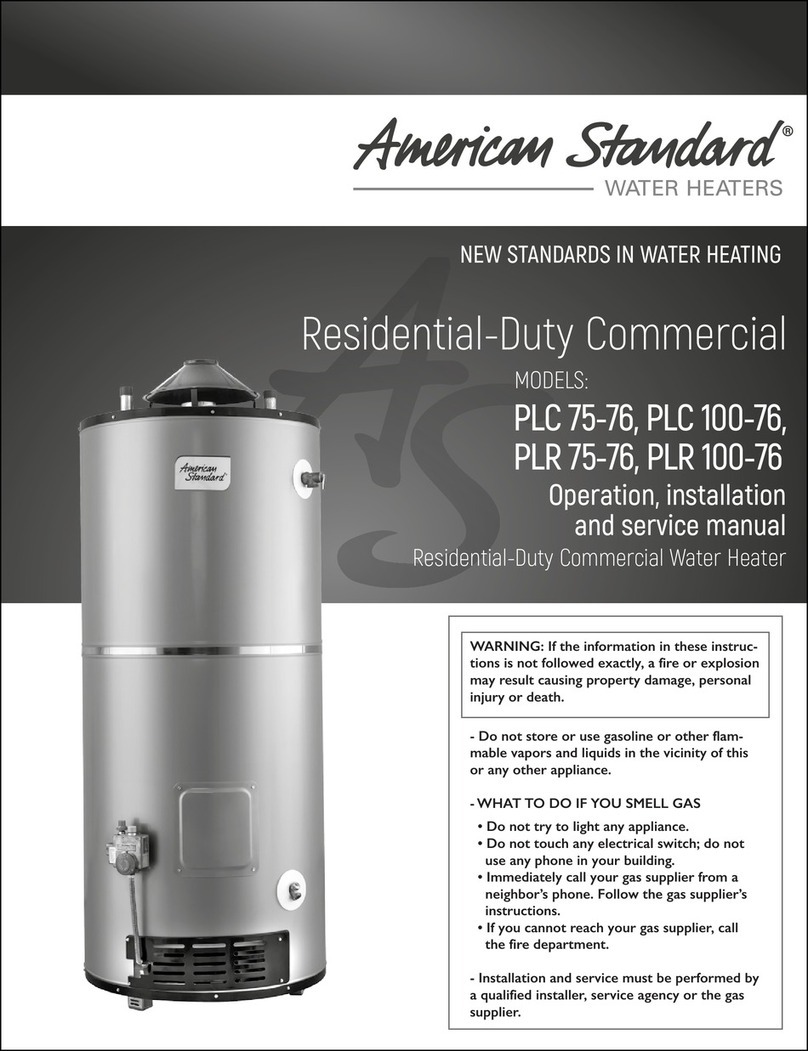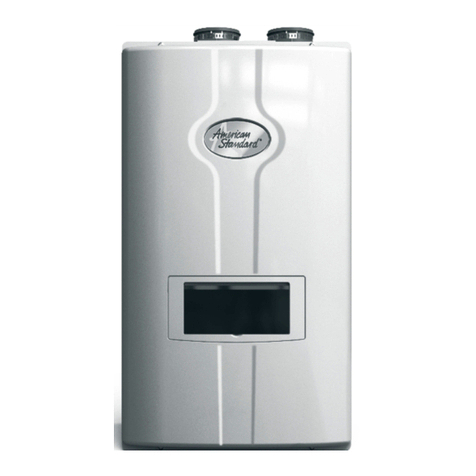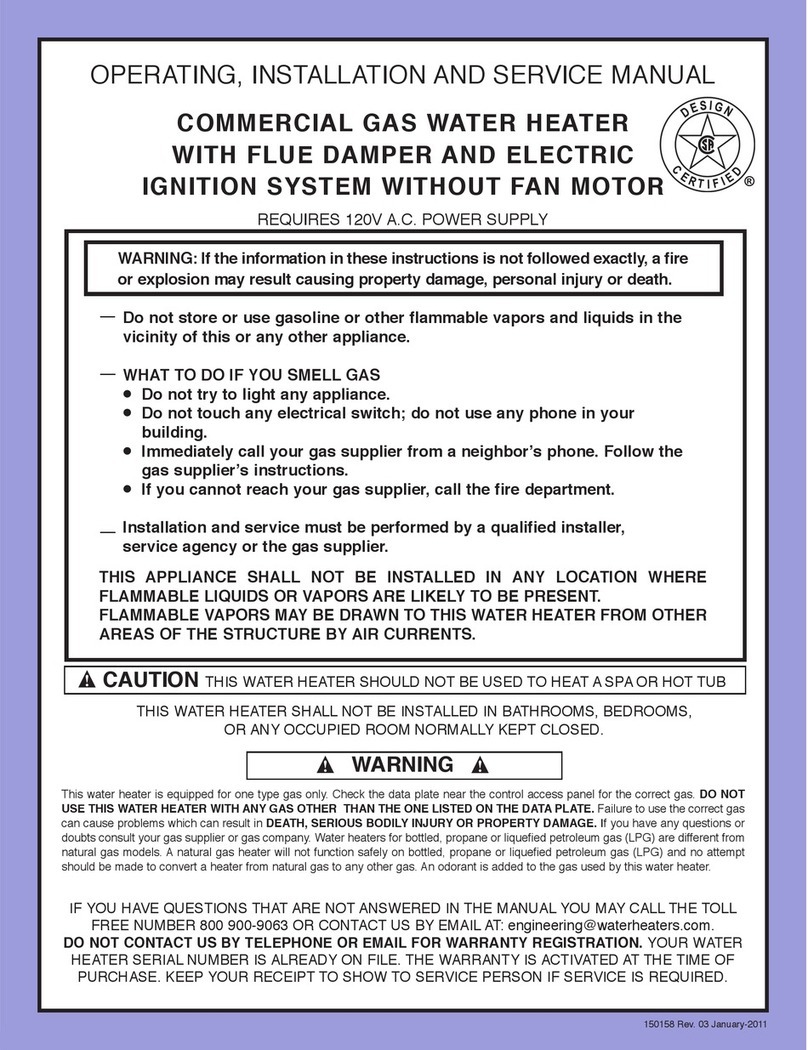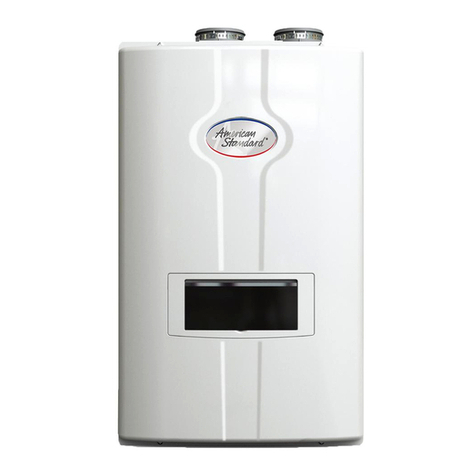TABLE OF CONTENTS
WARNINGS
WARRANTY LIMITATIONS, CONSUMER RESPONSABILITIES, PRESSUHRE BUILD-UP,
GENERAL, INSTALLATION
DRAFTHOOD LOCATION & FLUE DAMPER INSTALLATION, VENTING
WATER CONNECTIONS
GAS PIPING
TYPICAL INSTALLATION
SINGLE COMMERCIAL GAS MODEL
TOP CONNECTIONS WITH RETURN CIRCULATION
AIR SUPPLY, ALL AIR FROM INSIDE THE BUILDING
ALL AIR FROM OUTDOORS
DISCHARGE OF PURGED GASES, VENTING
INSTALLATION SAFETY WARNING L.P. UNITS, ANODES, MULTIPLE HEATER INSTALLATION
TEMPERATURE AND PRESSURE RELIEF VALVE
ELECTRICAL, JUCTION BOX, FILLING HEATER WITH WATER
INSTALLATION CHECKLIST
WIRING DIAGRAM
DAMPER OPERATION SEQUENCE, OPERATION
INSTRUCTIONS FOR CLEANING TANK, TO RETURN WATER HEATER TO OPERATION
COMBINATION SPACE HEATING /POTABLE WATER HEATING SYSTEM, VENTING SYSTEM INSPECTION
OPERATING INSTRUCTIONS
TO TURN OFF GAS TO APPLIANCE, HI-TEMPERATURE LIMIT,WATER TEMPERATURE REGULATION,
TEMPERATURE CONTROL
GAS PRESSURE, EMERGENCY SHUTDOWN INSTRUCTIONS, TAMPERING, MAINTENANCE
PILOT AND MAIN BURNER, WATER HEATER SOUNDS, DRAINING
COMMON COMPLAINTS
REPLACEMENT PARTS LIST
REPLACEMENT PARTS ILLUSTRATION
COMBINATION SPACE HEATING / POTABLE WATER HEATING SYSTEM
A
1
3
6
7
8
9
10
11
12
13
14
16
17
18
19
20
22
23
24
25
26
27
28
30
31
32
C D
WARNING
Read and understand instruction manual and safety
messages before installing, operating or servicing
this water heater
Failure to follow instructions and safety messages
could result in death or serious injury.
Instruction manual must remain with water heater.
DANGER Water temperature over 125°f (52°c) can cause
severe burns instantly resulting in severe injury or
death.
Children, the elderly, and the physically or mentally
disabled are at highest risk for scald injury.
Feel water before bathing or showering.
Temperature limiting valves are available.
Read instruction manual for safe temperature
setting.
WARNING
For continued protection against risk of fire:
. Do not install water heater on carpeted floor.
. Do not operate water heater if flood damaged.
Fire Hazard
WARNING
. Overheated water can cause water tank
explosion.
. Properly sized temperature and pressure relief
valve must be installed in opening provided.
Explosion Hazard
WARNING
. Before servicing the water heater, make sure the
blower assembly is unplugged or the electrical
supply to the water heater is turned “OFF”.
. Label all wires prior to disconnection when
servicing controls. Wiring error can cause
improper and dangerous operation. Verify proper
operation after servicing.
. Failure to do this could result in death, serious
bodily injury, or property damage.
CAUTION
. Do not operate water heater if flood damaged.
. Inspect and replace anode.
. Install in location with drainage.
. Fill tank with water before operation.
. Be alert for thermal expansion.
Refer to instrucion manual for installation and service.
Improper installation and use may result in property damage.
WARNING
. Install vent system in accordance with codes.
. Do not operate water heater if flood damaged.
. High altitude orifice must be installed for
operation above 7,700 feet (2,347m).
. Do not operate if soot buildup.
. Do not place chemical vapor emitting products
near water heater.
. Gas and carbon monoxide detectors are available.
Breathing carbon monoxide can cause brain damage or death.
Always read and understand instruction manual
Breathing Hazard - Carbon Monoxide Gas
WARNING
. Do not store or use gasoline or other flammable vapors and liquids in the
vicinity of this or any other appliance.
. Avoid all ignition sources if you smell LP gas.
. Do not expose water heater control to excesive gas pressure.
. Use only gas shown on rating plate.
. Mantain required clearances to combustibles.
. Keep ignition sources away from faucets after extended period of non-use.
Read instruction manual before
installing, using or servicing
water heater.
Fire or Explosion Hazard
